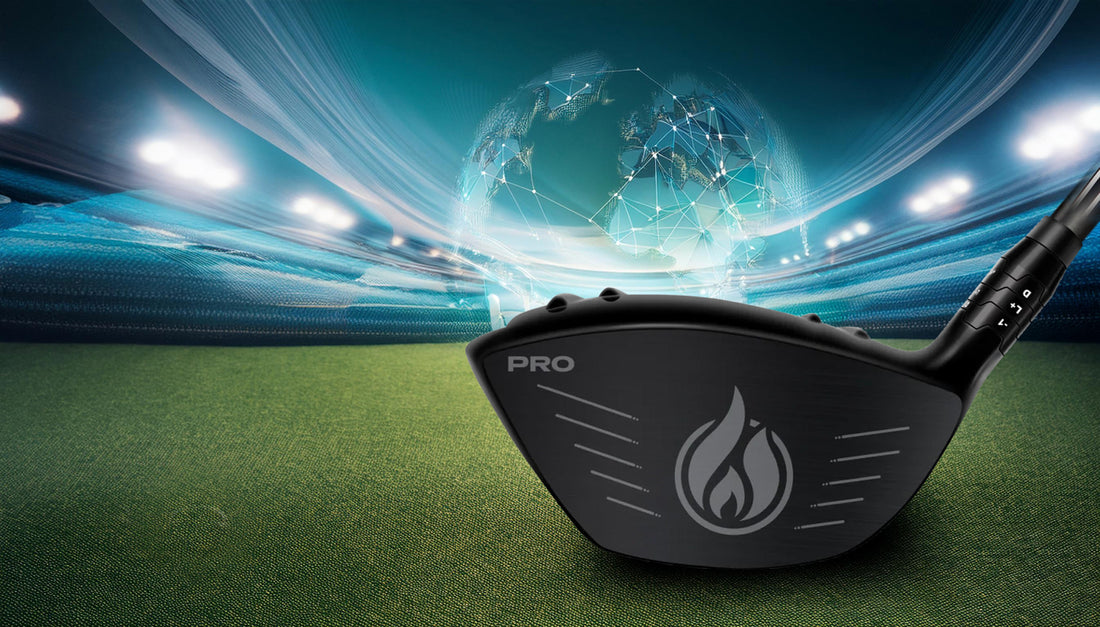
How Technology Has Changed the Driver
Share
The evolution of golf driving clubs has come a long way since the earliest golfers carved their own clubs out of wood. Each club had its own unique design and characteristics. It was the early sixteenth century before William Mayne became the first official manufacturer. Distinguished as a bow-maker, Mayne was commissioned to create a set of clubs for King James IV of Scotland.
It was the middle of the eighteenth century before club makers released the first iron club heads, but due to its impressive durability, hickory wood was the preferred material for golf shafts. When Allan Lard created a perforated steel shaft with hundreds of small holes to enhance club head speed, they caused a whistling sound and the six-sided milled shaft became known as the “Whistler.”
The first seamless tubular steel shafts were officially allowed for play at U.S. Open in 1924 at Detroit’s Oakland Hill Country Club. However, the R&A continued their ban on steel shafts until the Prince of Wales played with a set at St. Andrews in 1929. That same year, True Temper developed the first seamless tapered step-down shaft that allowed for different shaft flexes.
Gain up to 20 extra yards off the tee—instantly!
Find Your Perfect FIRE Driver in Secondswith our Driver Selector Tool
Get Your Perfect Driver Now →Significant turning point in equipment history...
Wooden hickory clubheads were the norm off the tee box and distant fairway shots until 1979 when TaylorMade released the first driver head cast from stainless steel. Until then, a golfer’s choice of a driver was largely based on appearance rather than functionality and measuring performance was quite different than what we have today. It was the quality and grain of the wood that was a major consideration and most golfers loved their persimmon driver head. In fact, buying a new driver back then was to replace the head that was wearing out and covered with battle scars from missed hits.
The Impact of Golf Technology on Drivers
Head technology has rapidly advanced since the first metalhead driver was seen on the tee box. As metal wood technology continued to evolve, golf club manufacturers moved from steel to titanium and then to multi-material driver clubheads that allowed for more aerodynamic designs. Driver heads suddenly became significantly larger when Callaway released the Big Bertha with an oversized stainless steel clubhead that established a new standard for clubmakers.
If you fast forward, the landscape of golf equipment transformed dramatically and the rules of golf currently allow drivers up to 460 cubic centimeters. Advancements in clubhead aerodynamics and graphite shaft technologies resulted in far more forgiving drivers and fairway woods that provided better performance for off-center hits. These technologies simply didn't exist in the past but are now crucial for anyone serious about getting the most out of their golfing experience.
Compared to the persimmon drivers of the past, modern clubs are highly specialized and match a golfer's unique swing characteristics. That’s why manufacturers now employ top engineering talent and invest heavily in research and development to capture the attention of today’s consumers. The technology of the driver gives golfers a better chance to improve their skills. Whether you're a seasoned pro or a budding enthusiast, technology can enhance your performance.
Importance of Club Fitting for Improving Your Game
At some point, every golfer needs to invest in a driver that’s built for their swing, and this is where centuries of advancements in technology truly shine. Plus, professional club fitters now use computer analysis to evaluate various aspects of your swing, including club head speed, launch angle, ball flight, and grip strength. These measurements help custom fitters make accurate recommendations, ensuring you get a club that is tailored to your game.
The evolution of golf club materials has also played a crucial role in enhancing performance and this is where game improvement drivers come into play. Known for perimeter weighting, today’s drivers have a larger sweet spot, low center of gravity, and are lighter in weight. For high handicappers struggling with contact and accuracy, the ability to swing a driver faster translates into higher ball speed and increased distance off the tee.
Krank Golf is revolutionizing the world of drivers by matching your swing speed to the ideal face thickness, enabling you to maximize your distance and accuracy. Unlike other manufacturers that produce a single driver face thickness for all golfers, Krank Golf ensures that each player gets the perfect driver face spring effect, regardless of their swing speed, age, or gender. This innovation is especially beneficial for medium to slower swing speed golfers to maximize their distance.
Considering these significant performance benefits, it’s highly recommended for golfers of all skill levels and handicaps to consider a correctly-fitted driver. Krank’s new Formula FIRE Drivers deliver maximum driver face spring effect for all swing speeds. If your swing speed is below 105 MPH, 90 MPH, or 70 MPH, it's crucial to understand the science behind driver face spring effect. A properly matched driver face can add 20 to 40 yards to your drive right from the first swing.
Unlock Your True Distance Potential
Krank Golf is dedicated to engineering high-performance drivers and fairway woods that maximize distance and precision. If you're ready to take your game to the next level, the right Krank Formula FIRE driver can help you hit the ball farther and straighter. Click here for our DRIVER FITTING TOOL to design a FIRE Driver custom-built for your swing.


